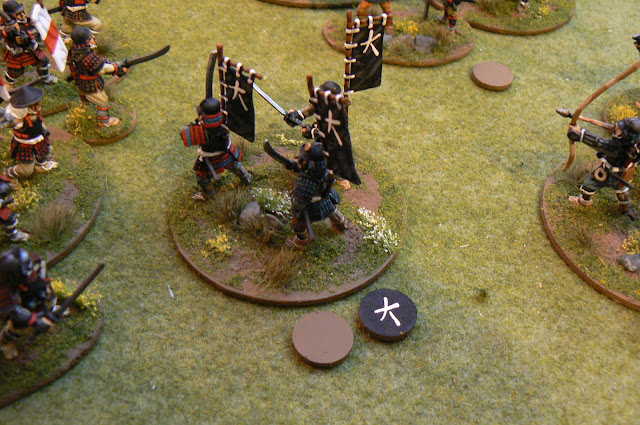I was taking my new Sengoku collection for a solo test spin with Lion Rampant rules yesterday.
The rules has the player activate and then conclude any actions such as combat or firing before moving to the next unit, with the player choosing the sequence depending upon tactical considerations. However, sometimes the player will lose track of which unit has activated or not. Or at least my memory can fail, especially if interrupted or needing to leave the table during the turn. It may be necessary to mark those units already activated and obviously markers would be the solution. I therefore decided that one could combine the use of these markers to the requirement of “battered” indication for a unit into a single simple chit for the tabletop.
 |
| The Takeda marker showing both its 'battered' side and earth-coloured 'activated' reversed side. |
I used MDF laser-cut very small rounds as they are uniform and thick as to allow ease of pickup from the table. I painted one side with my usual “earth” tone colour [ as to be discrete on the table ] and the other side of the chit in the ‘colours’ of the retinue.
 |
| Showing the two respective clan markers. Obviously one does not need to do this, but I find it fulfilling ( I say with a bit of a grin ) |
 |
| The markers in action. The weakened samurai on the left are still battered while the two ashigaru units have done their activations. |
Obviously this method need not be exclusive to these rules and can be useful for many other applications. It may be simple but effective and one of those hand-slap lightbulb moments which are great to deal with the requirement but embarrassing to believe that you did not think of it earlier!












